The Indian market size for missiles and air defence (AD) systems is projected to be around US$700-US$800 billion in the coming 10 years with the components including anti-tank guided missiles (ATGMs), cruise missiles, air defence systems like the S-400 and the National Advanced Surface to Air Missile System (NASAMS). India has already ordered the S400s from Russia in an order worth about $5 bn made in 2018 and there is also a key requirement of around 70,000-80,000 ATGMs in the coming decade.
History of Development
The history of air defence artillery in India began in 1939, during the Second World War, when the British Government was forced to raise air defence units in India to counter the Japanese air threat in south east Asia. Few Indian troops were trained in the use of the three-inch ack-ack gun and later the 40mm L/60 gun, as part of the anti-aircraft batteries of Hongkong and Singapore Royal Artillery (HKSRA) and Indian Artillery.
From 1941 onwards, the anti-aircraft units and training establishments began to be raised in India with Indian officers and men being posted into these establishments from the regiment of artillery and infantry units and later through fresh commission and enrolment.
In July 1940, the Anti-Aircraft and Coast Defence Wings were established at Karachi for training of Indian officers, JCOs and NCOs in the anti-aircraft techniques. In August 1940, an important decision was taken by the British War Office to create an anti-aircraft branch of Indian Artillery on the concept of tank artillery. On 14 September 1940, one Indian anti-aircraft Technical Training Battery was raised at Colaba, Bombay. It included nucleus of the first anti-aircraft unit of Indian Artillery – the R (Royal) HAA Regiment. In January 1941, Light anti-aircraft unit called the U LAA Regiment was raised at Malir Cantt (now in Pakistan) and was equipped with L/60 guns. In April 1941, both of these units were re-named and thus R HAA became the 1 Indian HAA Regiment IA and U LAA became 1 Indian LAA Regiment IA.
The post-1971 war period saw rapid modernization and mechanization of AD Artillery. Many a state-of-the-art and latest weapon systems were introduced into service during this period, such as:
• The Tiger Cat Misisle System (1972): The ZSU-23-4B Shilka (1973) a fully integrated, self-propelled, anti-aircraft system with four liquid-cooled 23mm automatic cannons mounted on the front of a large, flat, armored turret.
• The ZU-23-2B guns (1976) anti-aircraft gun system comprises twin 23mm cannons on a towed two-wheel carriage.
Subsequently the Igla SAM and the Strela-10M missiles were introduced during 1988-89.
The Corps of AD Artillery came into its own on 10 January 1994. The Directorate General of Air Defence Artillery (AAD) started functioning from the same day. Likewise, the AD Artillery branches at the various command HQs were also formed. The Air Defence and Guided Missile (ADGM) School at Gopalpur started functioning as an autonomous entity and the AD Wing at Artillery Centre, Nasik Road Camp became the ADGM Centre.
The Corps of Air Defence Artillery has been re-designated as Corps of Army Air Defence with effect from 18 April 2005.
Current AD Systems
These are following air defence systems currently used by Indian armed forces:
Anti-aircraft Gun Systems
L-70 AD Gun: The L-70 AD gun forms the backbone of the air defence system of the Indian Army. In 2007, India’s Ordnance Factories Board (OFB) signed for the second upgrade of the 40mm L-70 guns inducted by the Indian army in the early 1960s. The guns are currently produced by ordnance factories under license from the Swedish company. Over 600 such guns are currently in the army’s inventory. Though India’s armed forces are increasingly opting for missile-based AD systems, the army wants to retain gun-based systems as well. The 40-mm single-barrel weapon, the original version of which dates back to the World War-II has been in service with the Indian Army for about 45 years.
Zu-23-2B Guns. This anti-aircraft gun system comprises twin 23mm cannons on a towed two-wheel carriage. The Soviet origin ZU-23 has been in service for over 30 years. Though primarily an AD weapon, these twin-barrel rapid firing guns have been consistently used by Indian Army in border conflicts.
These vintage anti-aircraft guns that form the mainstay of the Army’s air defence network are soon to be replaced. The Indian Army wants its new guns to have an effective range of at least 3,500 meters with the ability to engage targets flying at speeds more than 300 meters per second. The guns should have the capability to engage targets with or without a fire-control radar.
Besides the L-70 and ZU-23, other anti-aircraft systems like the OSA-AK, SA-9, ZSU-23-4 Schilka have been around for about three decades and only some cosmetic modifications to these systems have been undertaken.
Anti-aircraft Gun and Missile Systems
Schilka: A self-propelled weapon system and designed to fight primarily tactical aircraft and helicopters.
Igla: A short-range man-portable air defence [missile] system. Igla 19K310 (SA-16 Gimlet). A further development from the SA-14 and SA-7 series of man-portable surface-to-air missiles.
Tunguska-M: A gun missile system. The advent of tactical precision-guided weapons (PGW) called for the introduction of a missile channel to fight aircraft and helicopters before they could fire PGW. As a consequence, the renowned Tunguska AD gun-missile system was designed by Russia and acquired by Indian Army. It can engage targets while stationary and on the move, using missiles for long-range targets and guns foreclose-in defence.
These AD systems were all acquired from the Soviet (now Russian/Ukrainian) companies.
The Army has indicated to the defence ministry that the AD area is an area of critical concern and the current armoury should be replaced with advanced systems immediately from companies overseas.
Surface-to-air (SAM) Missiles
ZRK SD Kvadrat (SA-6 Gainful): The SA-6 Gainful is a two stage, solid-fuel, low-altitude surface-to-air missile. It has a range of 3,000 to 24,000 meters.
OSA AKM (SA-8b Gecko): It is a single-stage, solid-fuel, short-range, low-altitude, all-weather surface-to-air missile. Four command-guided missiles are carried ready to launch.
Strela-10M3 (SA-13 Gopher): The SA-13 Gopher is a short-range, low altitude surface-to-air missile. The SA-13 missile has a maximum speed of Mach 2 and carries a five kg high explosive warhead.
Strela-2M (SA-7B Grail): It is a man-portable, shoulder-fired, low-altitude SAM similar to the US Army’s Redeye SAM. The missile had a HE warhead and passive infrared homing guidance. They are a tail-chase missile system.
The surface-to-surface missile that form the tactical artillery of Indian Army include the Brahmos cruise missile, the Prithvi missile which comes in four variants and the Agni missile with six variants.
Ongoing Programmes
Gun and Missile System. After almost three years of industry discussion between Indian Army and defence industry over procurement of 428 self-propelled air defence gun missile (SPADGM) system costing around Rs 16,000 crore, Ministry of Defence has finally formalized the roadmap for kick-start the project. In October 2018, Indian Army officially declared Hanwha Defence Systems of South Korea as the only qualified company for the gun and missile system programme.
In the 2013 global tender, the Indian Army shortlisted three companies – Hanwha Defense Systems, which offered its Hybrid Biho system and Russian companies Almaz Antey, which offered its upgraded Tunguska system and KBP Tula, which offer its Pantsir system22. The weapons of shortlisted companies were evaluated throughout 2015 and tested in 2017. However, both the upgraded Tunguska system fielded by Almaz Ante and Pantsir by KBP Tula systems were not fully compliant during the trials. The program entitled for the procurement of five regiments, or 104 systems of gun missiles systems.
The Indian Army is looking for a mix of both gun and missiles mounted on one or separate high mobility vehicles. In addition, the gun as well as the missile should be able to engage aerial targets both with and without the fire control radar, either independently or simultaneously. The SPADGM systems will eventually replace the army’s 1360 obsolete Bofors L-70 (40mm) single barrel and Soviet-era Zu-23-2 towed 23 mm twin-barrel weapon systems.
Replacement of L-70 Guns. In September 2013, the tender issued in 2009 for replacement of L-70 air defence guns, had to be cancelled as only Rosoboronexport of Russia responded, leading to a single vendor situation. The tender had gone to Rosoboronexport of Russia, Bumar of Poland, Thales of France and the Doosan Group of South Korea. The 2009 tender (cancelled in 2013) was also a re-bid of an earlier tender of 2007, which was cancelled because only the OFB in partnership with Rheinmetall Air Defence had submitted the bid which led to a single vendor situation.
Very Short-Range Air Defence Programme
Indian Army had initiated the process to acquire Very Short-Range Air Defence (VSHORAD) missiles in 2010. It went through several rounds of trials before Rosoboronexport’s Igla-S qualified in January 2018 as it was emerged lowest bidder with $1.47 billion. The other two bidders were Swedish SAAB’s RBS70 NG ($2.6 billion) and France’s MBDA Mistral ($3.68 billion). VSHORAD program was initiated to replace Russian Igla-M Systems that have been used by Army since the 1980s. Under this program, Indian Army issued Request for Proposal (RFP) for 5,175 missiles and associated equipment, out of which around 2,300 missiles will be bought in fully formed condition, 260 will be in semi-knocked down (SKD) condition and 1,000 missiles will be completely knocked down (CKD) and 600 missiles will be produced in India under Make in India initiative.
Igla-S (SA-24). Igla-S is the latest model of Russian MANIPADS (man-portable air defence system) technology as it offers superior performance over earlier supplied SA-18 missiles to India. It is designed for use against visible aerial targets at short range such as tactical aircraft, helicopters, unmanned aerial vehicle (UAVs), cruise missiles and countermeasures. As per the requirement of Indian Army, it will have maximum range of 6 kms, altitude of 3 kms along with all-weather capability.
National Advanced Surface to Air Missile System. The programme was initiated in 2018, when Defence Acquisition Council (DAC) approved the Acceptance of Necessity (AoN) for the acquisition of National Advanced Surface to Air Missile System-II (NASAMS-II). India has begun the process of acquiring the NASAMS-II from the US to fully secure its airspace against aerial threats ranging from drones to ballistic missiles. NASAMS-II will be used along with indigenous, Russian and Israeli systems to establish a multi-layered missile shield over the National Capital Territory of Delhi.
NASAMS-II is an upgraded version of the Kongsberg Defence & Aerospace/Raytheon National Advanced Surface to-Air Missile System (NASAMS) and features new 3D mobile surveillance radars and 12 missile launchers for quicker reaction. The new air-defence system will eventually supplement the long-delayed indigenous two-tier ballistic missile defence (BMD) shield that is in an advanced stage of development by DRDO.
Comments
If the enemy is acquiring and is equipped with ‘first-look, first-shoot, first-kill’ capabilities with smarter sensors, longer stand-off weapons and stealthy platforms, it is imperative that our aerial and ground-based weapons are a step ahead. Manual, second or even third-generation systems are becoming redundant, given that the sensor-to-shooter loop is getting shortened by the day.
Automation of responses also calls for greater diligence in air space control and Identification of Friend and Foe (IFF) to avoid fratricide or ‘blue-on-blue’ kills.
The IAF is equipped quite satisfactorily to generate the big situational picture using various radars and sensors and to share it with the Army and Navy. The Navy is also well on its way in strengthening its maritime AD capabilities. The Army, however, is struggling with delays to modernise its Air Defence Corps with ground-based air defence weapon systems (GBADWS) to safeguard the Army’s integral assets and manage surface coordination.
Research projects must be user-led to ensure they do not suffer time and cost-overruns, which force the Services to meet their requirements through imports after considerable funds and efforts have been sunk in foreclosed projects.
A common AD weapon systems thread must run across all the three Services, not only to ensure smooth inter-service integration and interoperability of weapon and support systems, but also for driving the economy of scale, keeping in mind the high cost of GBADWS. Such commonality can be achieved in many operational areas such as a common successor gun system or a common Very Short Range Air Defence (VSHORAD) system, which can be mounted on different types of platforms as suited to each Service (shoulder fired/ pedestal/ vehicle/ ship-mounted, etc). Also, commonality can be achieved in fielding a similar genre of short-, medium- and long-range SAMs (SRSAMs, MRSAMs and LRSAMs) for the Services, which can have different ranges and launch platforms suited to specific Service needs.
Except for the successor guns (close-in weapon system or CIWS), action towards achieving commonality is being progressed in terms of VSHORADS, SRSAMs (Akash), MRSAMs (Barak) and LRSAM (Barak variant) besides ADC&RS. Even CIWS must follow suit.


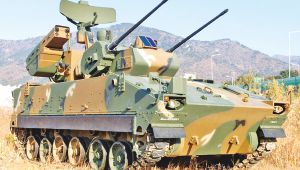


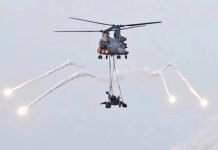
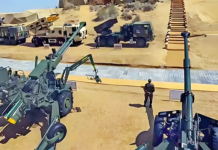
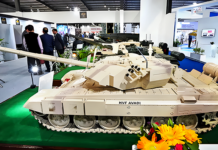
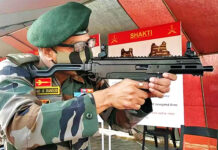
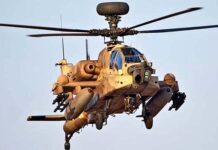








[…] ALSO READ: An Overview of Indian Air Defence Programmes […]